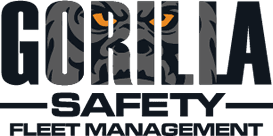How to Challenge a DOT Violation Using DataQ
by Nidasha Willis
DataQ is an electronic process that allows you to request and track a review of federal and state data issued by the Federal Motor Carrier Safety Administration (FMCSA). Often individuals or companies will go through this process if they receive alerts, violations, and investigations on their SMS profile that they feel are wrongly associated with them or do not depict an accurate sequence of events. In this blog, we’ll discuss using DataQ and tips for successful challenges.
What’s the Process for Challenging a DOT Violation?
To challenge a DOT violation, go to DataQ on the FMCSA portal and sign up for an account. Next, file a Request for Data Review (RDR). This RDR should contain any supporting documentation you have. This should include photos, repair records, log pages, maintenance records, appropriate sections of the rules and regulations, etc. Because the burden of proof is on the DataQ requestor, the most common reason a challenge is not successful is because of lack of documentation. We’ll talk more about this in the next section. After you’ve completed it, the RDR will be forwarded automatically to the appropriate office for resolution.
Tips for Successful Challenges
- Be selective with DataQ challenges
A successful DataQ challenge will include a professional, thoughtfull, and selective response. Officers responding to DataQs are often overwhelmed with requests, and they recognize that companies often challenge every inspection or violation. As a result, these may not be taken seriously.
- Understand commercial vehicle regulations
This should go without saying, but before you can challenge a citation, you must understand the rules and regulations themselves. You should have both The Federal Motor Carrier Safety Regulations Pocketbook (The Green Book) as well as the Commercial Vehicle Safety Alliance’s Out-of-Service Criteria. Make sure you understand the regulations in the state in which the violation occurred in as well.
- Provide supporting documentation
As mentioned above, having the right supporting document is the most important part of submitting a DataQ. Without the correct documentation, you can’t hope to win your case. Consequently, train your drivers to make sure they know how and when to take pictures. Every mechanical violation should be documented, and every picture should have a date and time stamp. Integrating this into your orientation process can guarantee that everyone is prepared if they need to be.
The date and time stamp on photos is an important detail. Here’s why:
- It helps identify whether drivers are being truthful about having fixed an issue
- If you submit a DataQ, the review officer is less likely to allege the photo was not taken at the time of the inspection
Finally, you should also plan to request the notes section before DataQ challenges. Officers are encouraged to put information in the “notes” section of the inspection or report, but they don’t have to give this to drivers. To make sure you know the whole story, request this section if you or your driver didn’t receive it.
- Challenge citations in court
If you get a citation and you take it to court, and they dismiss the ticket, then the state is required to remove it from your CSA scores. If you get a citation and the charge is reduced in court, then your CSA must also reflect this.
However, not many companies know that the way to manage your CSA scores through DataQ is to go to court. In many cases, this means a ticket is actually better than a warning because it can be fought in court.
Final thoughts
Protect your company by making sure your driver’s violations are correct. Visit DataQ to learn more.


